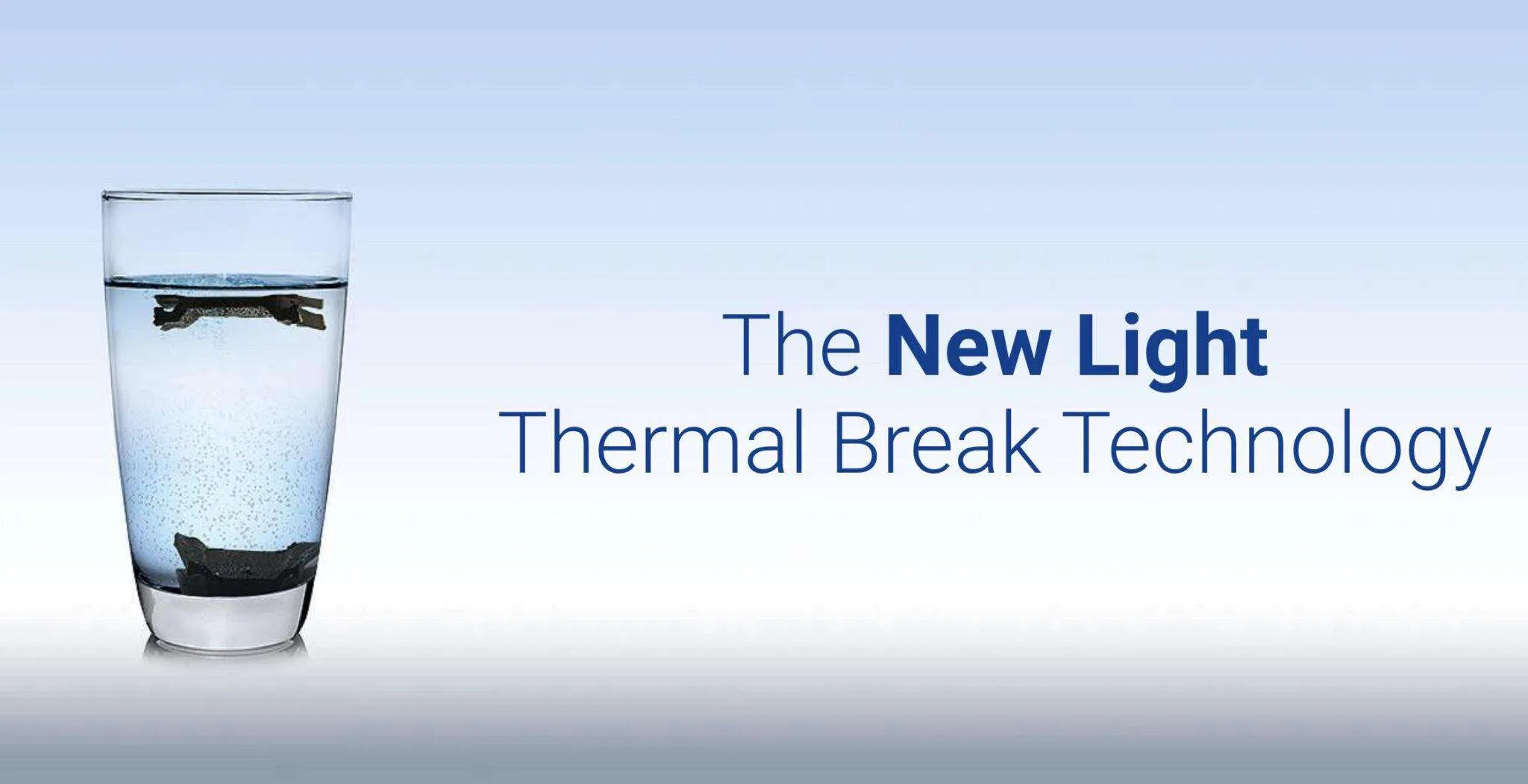Cool in the Summer, Warm in the Winter - Introducing Thermal Break Technology

Aluminum is in most ways the perfect material for constructing windows and doors; it is incredibly strong, light, weather proof and needs very little maintenance to provide years of reliable use. However, Aluminum is also a very good conductor of heat, which means that on its own it provides very poor insulation against the winter weather and provides little protection from the summer sun. In the case of Aluminum windows and doors, its main benefit is to prevent heat transferring from the inner frame to the outer frame and to prevent the cold moving in from the outer to the inner.
The thermal break in Eastern Aluminum windows and doors is created using a polyamide strip between the aluminum exterior and interior elements. The principle for the process is a non-conductive material, usually a rolled polyamide plastic strip, being fabricated between two aluminum components to reduce reciprocal temperature exchanges as well as improving noise reduction, radiation transference and prevention of vibration dampening.
Polyamide is an excellent thermal insulator. The thermal break minimizes the transfer of heat and cold through the aluminum window frame, giving the thermally broken aluminum window excellent insulation properties. Polyamide has very similar expansion rates to aluminum, ensuring Eastern Aluminum Extrusion maintains excellent structural integrity. The thermal barrier conducts up to 1,000 times less heat than aluminum, so it provides a tremendous reduction in heat loss and increases thermal performance. It also has the side effect of making your windows more soundproof, by dampening vibrations between the outer and inner frame.
Eastern Aluminum Extrusion Factory provides the facilities and capabilities for Thermal Break application to create more sophisticated, durable and complex structures by co-joining profiles that the die design process cannot achieve alone.
When your windows have a comfortable temperature, you have a comfortable temperature too.


